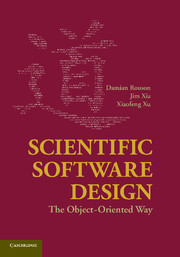Appendix B - Unified Modeling Language Elements
Published online by Cambridge University Press: 01 June 2011
Summary
This appendix summarizes the Unified Modeling Language (UML) diagrammatic notation employed throughout this book along with the associated terminology and brief definitions of each term. We consider the elements that appear in the five types of UML diagrams used in the body of the current text: use case, class, object, package, and sequence diagrams. At the end of the appendix, we give a brief discussion of Object Constraint Language (OCL), a declarative language for describing rules for UML models.
Use Case Diagrams
A use case is a description of a system's behavior as it responds to an outside request or input. It captures at a high level who does what for the system being modeled. Use cases describe behavior, focusing on the roles of each element in the system rather than on how each element does its works.
A use case diagram models relationships between use cases and external requests, thus rendering a visual overview of system functionality. Figure B.1 reexamines the fin heat conductor analyzer diagram from Figure 2.6, adding notations to identify the elements of the use case diagram.
Use case diagrams commonly contain the following elements:
Actors: people or external systems that interact with the system being modeled. Actors live outside the system and are the users of the system. Typically actors interact with the system through use cases. In UML, actors are drawn as stick figures. In the fin analyzer system example, system architect, thermal analyst, and numerical analyst are actors.
[…]
- Type
- Chapter
- Information
- Scientific Software DesignThe Object-Oriented Way, pp. 357 - 372Publisher: Cambridge University PressPrint publication year: 2011

